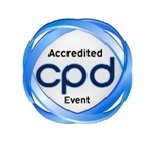
Tiffany Gwartney
Johns Hopkins All Children’s Hospital, USA
Title: Designing a cyclical continuing education program with simulated neonatal resuscitation skills practice for neonatal nurse practitioners
Biography
Biography: Tiffany Gwartney
Abstract
Statement of the Problem: Maintaining proficient resuscitation skills is critically important for all healthcare providers. In October 2015, the Guidelines for Cardiopulmonary Resuscitation and Emergency Cardiovascular Care of the Neonate were released by the American Heart Association (AHA) and American Academy of Pediatrics (AAP), recommending that providers engage in simulated training more frequently than the current biennial interval. These foundational guidelines for the AAP’s 7th edition of the Neonatal Resuscitation Program (NRP) were released in May, 2016, with an anticipated effective date of January 1, 2017. The project purpose was to design a continuing education program for routine, deliberate, simulated practice of resuscitation skills including endotracheal intubation, umbilical line insertion, and thoracostomy for Neonatal Nurse Practitioners (NNP) at Johns Hopkins All Children’s Hospital (JHACH), located in Saint Petersburg, Florida.
Methodology & Theoretical Orientation: The project design was intervention development using educational modules grounded in current evidence. The participants were selected using convenience sampling from NNPs currently employed at JHACH. The data, collected via examining current literature, reviewing procedural protocols, and seeking expert consultation, resulted in various products or outcomes including equipment lists, budgetary considerations, and educational module content.
Findings: The data, collected via examining current literature, reviewing procedural protocols, and seeking expert consultation, resulted in various products or outcomes including equipment lists, budgetary considerations, and educational module content.
Conclusion & Significance: The project result was a completed educational program scheduled for implementation on November 18, 2016.

